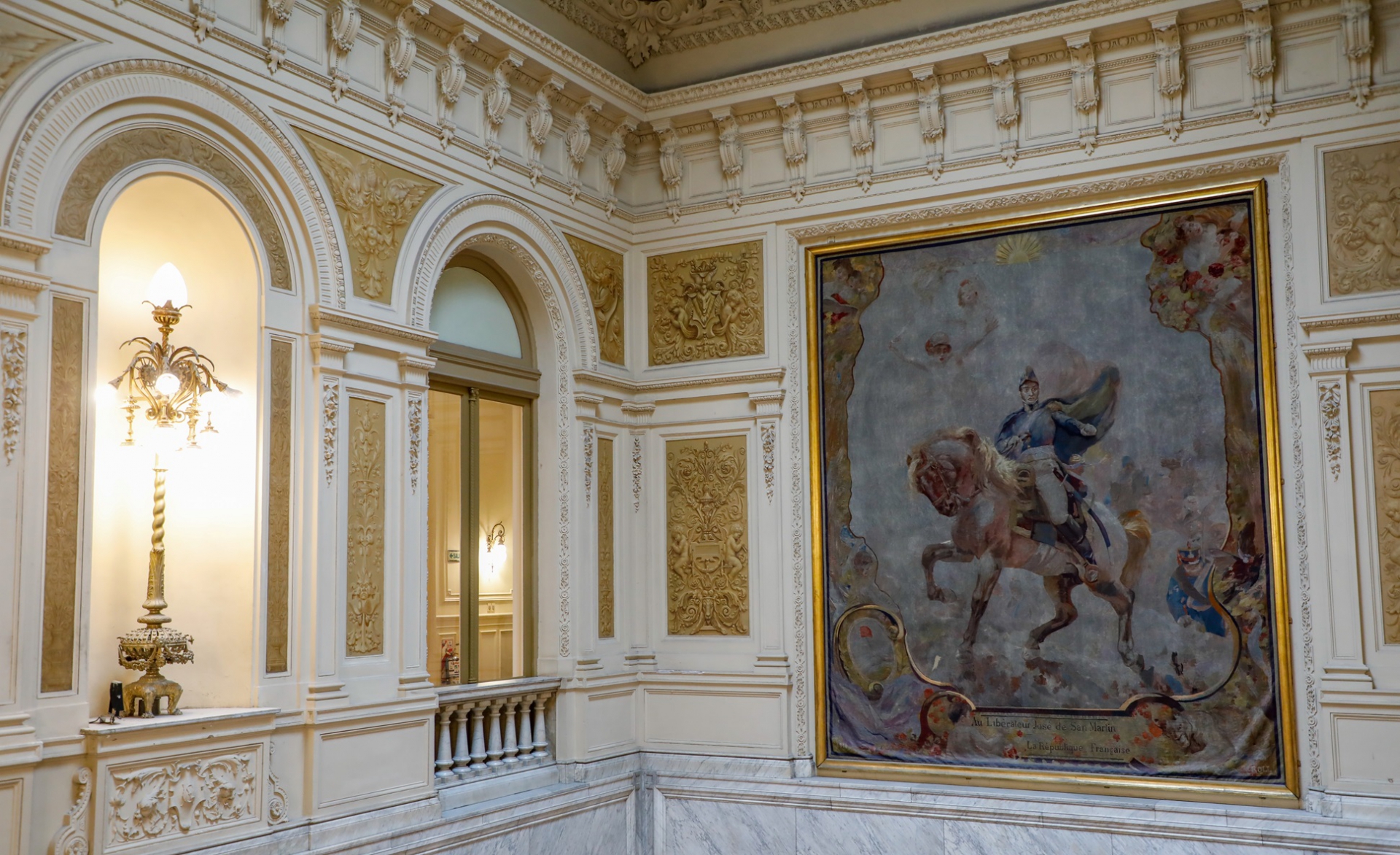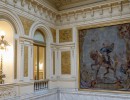On a day like today, 207 years ago, one of the greatest historical events in the Americas took place, and one of the greatest military feats in world history: the beginning of the crossing of the Andes. This military campaign, led by General José de San Martín (1778-1850), secured the independence of Argentina, Chile and Peru, putting an end to Spain's colonial power over South America.
In homage to this feat, in 1916 the French government donated to Argentina an imposing tapestry that was placed in an honourable place in the Casa Rosada, in front of the "French staircase" that leads to the reception rooms and presidential chambers. It is a tapestry made at the prestigious Manufacture des Gobelins - between 1911 and 1914 - in homage to Argentina's first centenary. The tapestry cardboard was designed by Alfred Roll (1846-1919), one of the official artists of the Third Republic.
The French gift arrived in Argentina in 1917, during the presidency of Hipólito Yrigoyen. One hundred years later, France took charge of its restoration, as pollution and the air that circulates in the stairways deteriorated the fibres and its colour.
The work represents the crossing of the Andes by San Martin and his army on 17 January 1817. The Liberator is depicted on a large scale and in the centre of the scene, on his horse, as he crosses the Andes.
Above the general, in the sky, an energetic warrior seems to be calling the defenders of freedom to arms, and a personification of the French Republic, with its Phrygian cap, is preparing to cover San Martín with a laurel wreath.
Above, on a banner, behind a still incomplete sun that refers to the iconography of the Argentine flag, the names San Lorenzo and Maipú appear. Below, the phrase that closes the representation: "To the liberator José de San Martín, the French Republic".
Crossing the Andes
This military campaign was conducted by mobilising six simultaneous columns over an extended front of more than 2,000 kilometres, at an average altitude of 3,000 metres, through six different passes. Two main columns crossed through the Los Patos pass, commanded by Soler, O'Higgins and San Martin, and through the Uspallata pass, commanded by General Las Heras. The other four smaller columns left first and advanced through passes to the south and north, with the aim of confusing and distracting the enemy in order to mask the main movement.
The army crossed the mountain range to assemble between 9 and 10 February at Curimón in the Aconcagua valley and set up the offensive to take the city of Santiago. The timing of the plan was perfect. The columns marched on different dates, and all converged on the objective as planned.
The crossing of the Andes Mountains is considered one of the great historical events that put the Army of what is now the Republic of Argentina at the top. This military campaign secured the independence of vast territories and put an end to the colonial power of Spain over South America.



